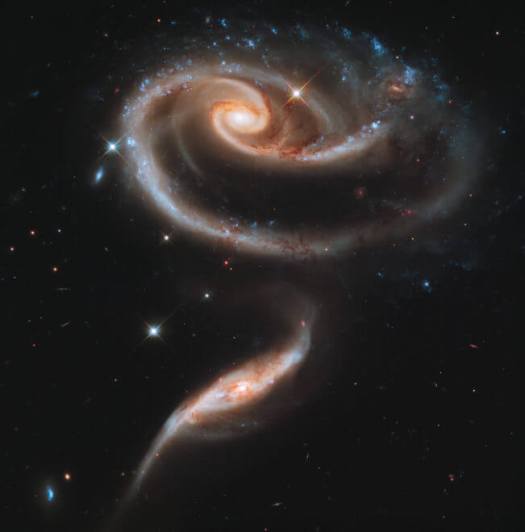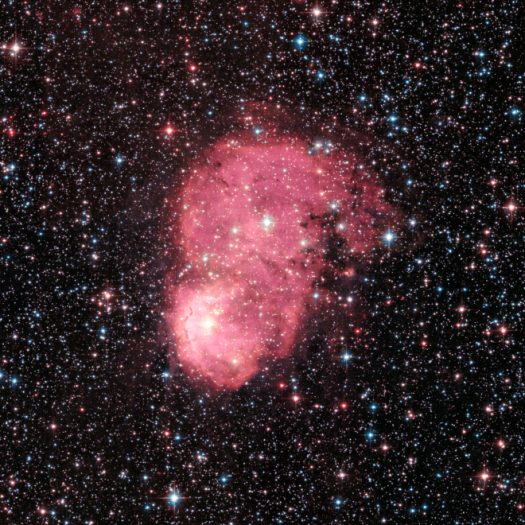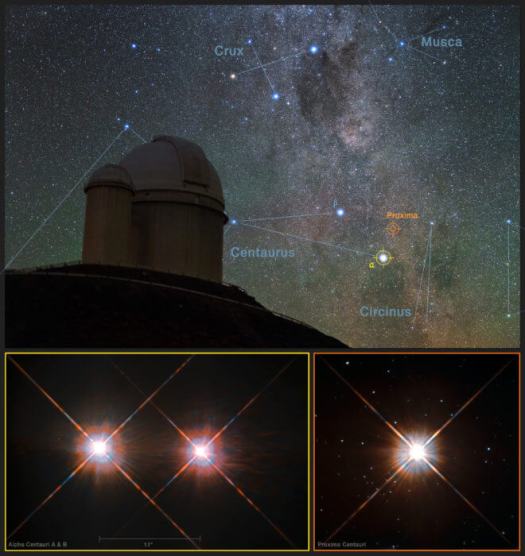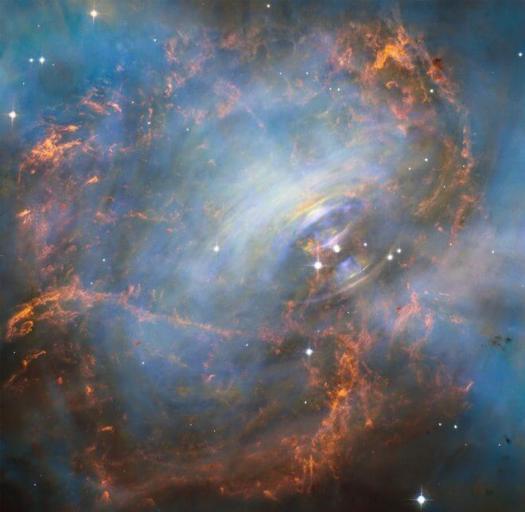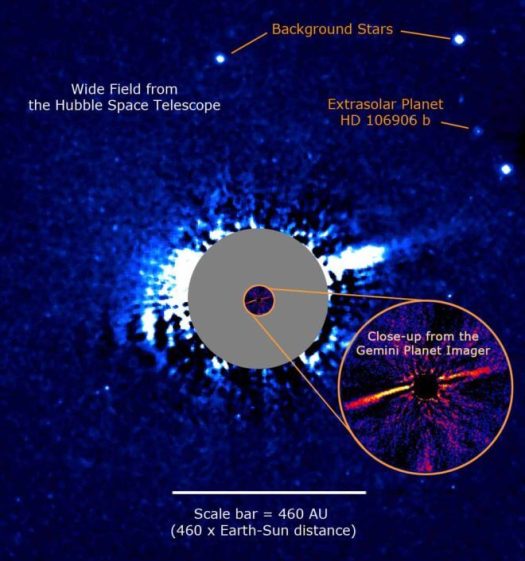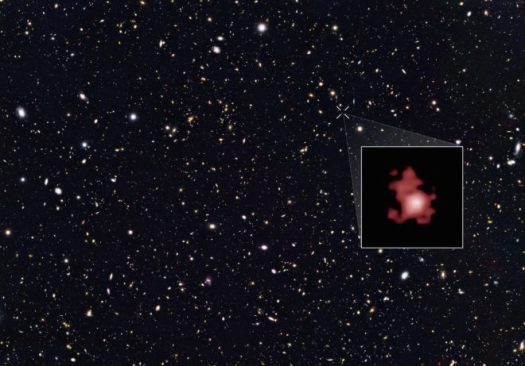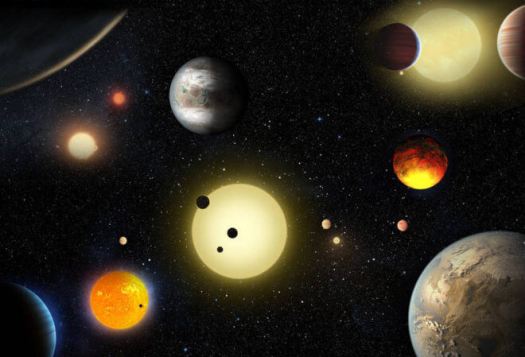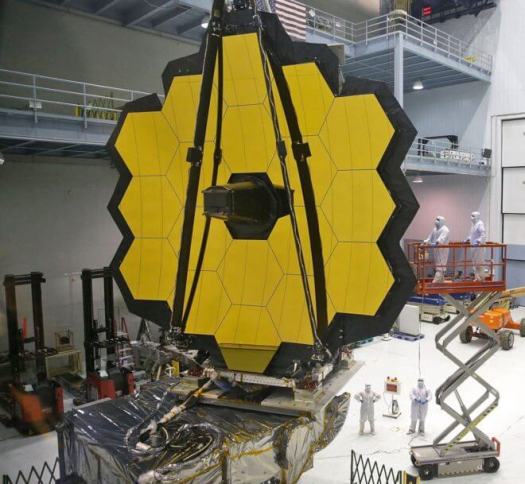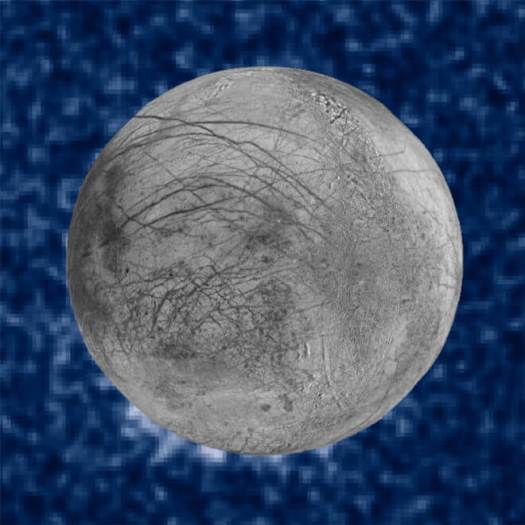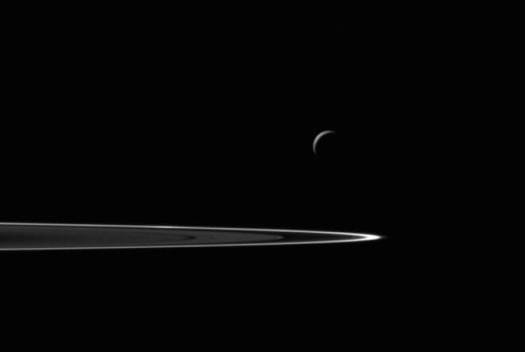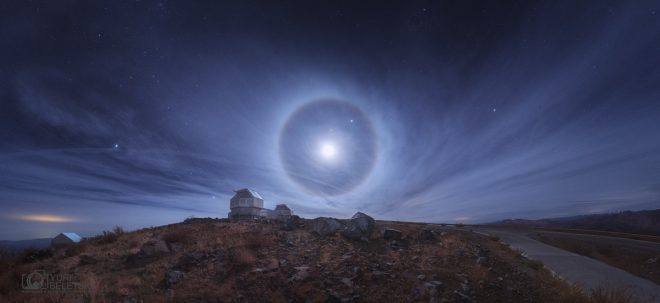This is a golden era for space and planetary science, a time when discoveries, new understandings, and newly-found mysteries are flooding in. There are so many reasons to find the drama intriguing: a desire to understand the physical forces at play, to learn how those forces led to the formation of Earth and ultimately us, to explore whether parallel scenarios unfolded on planets far away, and to see how our burgeoning knowledge might set the stage for exploration.
But always there is also the beauty; the gaudy, the stimulating, the overpowering spectacle of it all.
Here is a small sample of what came in during 2016:
The Small Magellanic Cloud, a dwarf galaxy that is a satellite of our Milky Way galaxy, can be seen only in the southern hemisphere. Here, the Hubble Space Telescope captured two nebulas in the cloud. Intense radiation from the brilliant central stars is heating hydrogen in each of the nebulas, causing them to glow red.
Together, the nebulas are called NGC 248 and are 60 light-years long and 20 light-years wide. It is among a number of glowing hydrogen nebulas in the dwarf satellite galaxy, which is found approximately 200,000 light-years away.
The image is part of a study called Small Magellanic Cloud Investigation of Dust and Gas Evolution (SMIDGE). Astronomers are using Hubble to probe the Milky Way satellite to understand how dust is different in galaxies that have a far lower supply of heavy elements needed to create that dust. {NASA.ESA, STSci/K. Sandstrom (University of California, San Diego), and the SMIDGE team}
Probably the biggest exoplanet news of the year, and one of the major science stories, involved the discovery of an exoplanet orbiting Proxima Centauri, the star closest to our own.
This picture combines a view of the southern skies over the European Space Observatory’s 3.6-metre telescope at the La Silla Observatory in Chile with images of the stars Proxima Centauri (lower-right) and the double star Alpha Centauri AB (lower-left).
The planet Proxima Centauri b is thought to lie within the habitable zone of its star. Learning more about the planet, the parent star and the two other stars in the Centauri system has become a focus of the exoplanet community.
We all know about auroras that light up our far northern skies, but there’s no reason why they wouldn’t exist on other planets shielded by a magnetic field — such as Jupiter. Astronomers using the Hubble Space Telescope have found them on the poles of our solar system’s largest planet, and produced far ultraviolet light images taken as the Juno spacecraft approached the planet.
Auroras are formed when charged particles in the space surrounding the planet are accelerated to high energies along the planet’s magnetic field. When the particles hit the atmosphere near the magnetic poles, they cause it to glow like gases in a fluorescent light fixture. Jupiter’s magnetosphere is 20,000 times stronger than that of Earth.
The full-color disk of Jupiter in this image was separately photographed at a different time by Hubble’s Outer Planet Atmospheres Legacy (OPAL) program, a long-term Hubble project that annually captures global maps of the outer planets.
Peering deep into the core of the Crab Nebula, this close-up image reveals the heart of one of the most historic and intensively studied remnants of a supernova, an exploding star. The inner region sends out clock-like pulses of radiation and tsunamis of charged particles embedded in magnetic fields.
The neutron star at the very center of the Crab Nebula has about the same mass as the sun but compressed into an incredibly dense sphere that is only a few miles across. Spinning 30 times a second, the neutron star shoots out detectable beams of energy that make it look like it’s pulsating.
The NASA Hubble Space Telescope image is centered on the region around the neutron star (the rightmost of the two bright stars near the center of this image) and the expanding debris surrounding it. Intricate details of glowing gas are shown in red and the blue glow is radiation given off by electrons spiraling at nearly the speed of light in the powerful magnetic field around the crushed stellar core.
Observations of the Crab supernova were recorded by Chinese astronomers in 1054 A.D. The nebula, bright enough to be visible in amateur telescopes, is located 6,500 light-years away in the constellation Taurus. (NASA, ESA)
The Gemini Planet Imager provides some of the earliest high-resolution, high-contrast direct imaging of exoplanets. Using a coronagraph inside the telescope to block out the light of the star, the GPI can then allow researchers to see the region surrounding that star — in other words, where exoplanets might be.
This image includes a wide-angle view of the star HD 106906 taken by the Hubble Space Telescope and a close-up view from the Planet Imager, which operates on the Gemini South telescope in Chile’s Atacama Desert. The image reveals a disturbed system of comets near the star, which may be responsible for the orbit of the the unusually distant giant planet (upper right).
The GPI Exoplanet Survey is operated by a team of astronomers from the University of California at Berkeley and 23 other institutions, and is targeting 600 young stars to understand how planetary systems evolve over time.
Paul Kalas of UC Berkeley is responsible for the image and led the team that wrote about it. That paper actually came out in the Astrophysical Journal in late 2015 but, hey, that’s almost 2016.
Astronomers have regularly found a galaxy or star that is the furthest from us ever to be detected. But the record is there to be broken, and in 2016 it was astronomers from the Great Observatories Origins Deep Survey (GOODS) who made the discovery.
Galaxy GN-z11, shown in the inset, was imaged as it was 13.4 billion years in the past, just 400 million years after the big bang. That means the universe was only three percent of its current age when the light left that galaxy.
The galaxy has many blue stars that are bright and young, but it looks red in this image because its light has been stretched to longer spectral wavelengths by the expansion of the universe.
(NASA, ESA, P. Oesch (Yale University), G. Brammer ( STScI)), P. van Dokkum (Yale University), and G. Illingworth (University of California, Santa Cruz)
No, these are not images of actual exoplanets, but they represent the continuing work of one of NASA’s most pioneering and productive missions, the Kepler Space Telescope. In May the Kepler team announced the detection of 1284 more planets or planet candidates as part of its newest catalog, the largest number announced at once in the mission.
To date, Kepler has identified unconfirmed 4,696 planet candidates, 2,331 confirmed planets, and 21 confirmed small planets in a habitable zone. In addition, the follow-on K2 mission has identified 458 candidate planets and 173 confirmed.
The Kepler spacecraft stared fixedly at a small portion of the sky for four years, looking to identify miniscule dimmings in the brightness of stars that would indicate that a planet was passing between the telescope and the star. In this way, Kepler has established a census of exoplanets that has been extrapolated to show the presence of billions and billions of planets around other stars.
The 21-foot array that will collect photons for the James Webb Space Telescope was finished and put on display in November at the Goddard Space Flight Center. It will be the largest mirror to go into space, and will likely make the JWST into the most powerful and far-seeing observatory ever.
It will observe in the infrared portion of the spectrum because its goals include peering deep into the past of the universe, which is now most visible in the infrared. This means the JWST will have to be cooled to -364 degrees F, just 50 degrees above absolute zero. To achieve that temperature, it’s insulated from the sun by five membrane layers, each no thicker than a human hair. Placing those membranes was finished in November, marking an end to construction of the telescope “mirror.”
The project has been enormously ambitious, and with that has come long delays and budget overruns that almost resulted in it being scrapped. Just this month, some early vibrating tests – designed to simulate launch conditions – experienced an anomaly that NASA engineers are working on now. The JWST is scheduled to launch in late 2018.
This composite image shows suspected plumes of water vapor erupting at the 7 o’clock position of Jupiter’s moon Europa. The plumes, photographed by NASA’s Hubble’s Space Telescope Imaging Spectrograph, were seen in silhouette as the moon passed in front of Jupiter.
While the plumes spitting out of Saturn’s moon Enceladus are much better known now — the Cassini spacecraft flew through them in 2015, after all — the growing scientific consensus that Europa also has some plumes may be of even greater importance. That moon is much larger, its ice-covered oceans have been determined to hold more water than all the oceans of Earth, and those oceans have clearly been around for a long time.
Hubble’s ultraviolet sensitivity allowed for the detection of the plumes, which rise more than 100 miles above Europa’s icy surface. The image of Europa, superimposed on the Hubble data, is assembled from data from the Galileo and Voyager missions. (NASA/ESA/W. Sparks (STScI)/USGS Astrogeology Science Center.)
How the fundamentals needed for life are created in space has been a longstanding mystery. The cosmos, after all, began with hydrogen and helium, and that was about it. But life needs carbon atoms connected to hydrogen, oxygen, nitrogen and other elements
Astronomers and astrochemists have been making progress in recent years and now understand the basics of how the heavier elements are formed in space. New data from the European Space Agency’s Herschel Space Observatory has gone further and has established that ultraviolet light from stars plays a key role in creating these molecules. Previously, scientists thought that turbulence created by “shock” events was the driving force.
This image is of the Orion nebula, where scientists studied carbon chemistry of a major star-forming region. Herschel probed an area of the electromagnetic spectrum — the far infrared, associated with cold objects — that no other space telescope has reached before so it could take into account the entire Orion Nebula instead of individual stars.
The result was a better understanding of how carbon and hydrogen reach the states necessary to bond and form the basic carbon chemistry of the cosmos (and of life.)
Within the inset image, the emission from ionized carbon atoms (C+), overlaid in yellow, was isolated and mapped out from spectrographic data.
Following a successful close flyby of Enceladus, the NASA-ESA Cassini spacecraft captured this image of the moon with Saturn’s rings beyond.
The image was taken in visible light with the Cassini spacecraft wide-angle camera when it was about 106,000 miles away from Enceladus. That flyby turned into a fly-through as well, when Cassini entered the plumes of water vapor and dust that shoot out of the bottom of the moon.
Scientists already know that an array of organic and other chemicals are in the plumes, but the field is awaiting word about the presence (or absence) of molecular hydrogen, which is formed when water comes into contact with rocks in hydrothermal vents. Many think that Enceledus is habitable and should be tested for signs of life because biosignatures could potentially exist in the relatively easy-to-access geysers.
While Yuri Beletsky is a staff astronomer at the Las Campanas Observatory in Chile, he is also a noted astrophotographer who specializes in capturing the beauty of nighttime scenes — usually connecting the celestial with the terrestrial.
In this 2016 photo, the moon is surrounded by a halo caused by the presence of millions of ice crystals in the upper atmosphere. Great conditions for an astrophotographer, but pretty much useless for an astronomer.
The star within the halo is Regulus, brightest object in the constellation Leo the Lion. On the left outside the halo is Procyon from Canis Minor and on the right is the planet Jupiter.
As is so often the case in this line of endeavor, it’s quite a sight to see.

